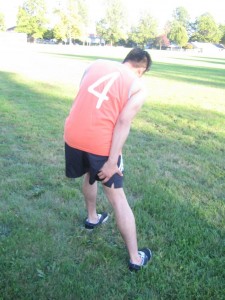A Salter-Harris fracture involves damage to the growth plate of bone among children. Generally, it is important to note that the growth plate is a soft region of cartilage at the ends of long bones. This type of fracture can develop in any long bone in the body such as fingers, toes, arms and legs.
The fracture typically occurs among children and adolescents during sports. The injury requires early diagnosis and treatment to ensure normal growth of the bone.
What are the signs?
Generally, a Salter-Harris fracture typically occurs after a fall or injury that results to pain. It can be accompanied by other symptoms such as:
- Tenderness
- Difficulty bearing weight on the lower limb
- Reduced range of motion especially with upper body injuries
- Warmth and swelling around the joint
- Possible deformity or displacement of bone
A Salter-Harris fracture typically occurs after a fall or injury that results to pain.
What are the types?
The injury is categorized based on how the injury affects the growth plate and adjacent bone.
- Type 1 – occurs if a force strikes the growth plate, separating the rounded edge of the bone from the bone shaft. This is likely to occur among younger children.
- Type 2 – occurs if there is damage to the growth plate and moves away from the joint along with a segment of the bone shaft. This can affect children over 10 years old.
- Type 3 – this occur if a force hits the growth plate and rounded region of bone but does not include the bone shaft. It might include the cartilage and enter the joint.
- Type 4 – occurs if the growth plate, round part of bone and the bone shaft incurs damage. This can occur at any age and can affect the growth of bone.
- Type 5 – this is an uncommon form that occurs if there is compression of the growth plate, usually the ankle and knee. In addition, it is often left undiagnosed and the damage can disrupt with bone growth.
Management of a Salter-Harris fracture
The treatment is based on the type of fracture, bone affected and if there are other injuries present.
Conservative care
Generally, the types 1 and 2 are simple injuries that do not necessitate surgery. The doctor will place the affected bone in a splint, cast or sling to keep it in the right position and protect it as it recuperates.
Oftentimes, the fracture simply requires non-surgical realignment of the bone or closed reduction. The doctor provides the child with a pain medication or local anesthetic before the procedure.
The type 5 fractures are hard to diagnose and likely to affect bone growth. The doctor might suggest keeping weight off the bone to prevent further damage to the growth plate.
Surgical intervention
The types 3 and 4 might require surgical realignment of the bone or open reduction. Generally, the doctor will secure the bone fragments into alignment and utilize wires, screws or metal plates.
Some cases of type 5 fractures are also managed with surgery. In most cases of surgery, a cast is utilized to protect and immobilize the area as it recuperates. An X-ray is also required to monitor the bone growth at the site of injury.
Quick Note / Disclaimer
The material posted on this page on Salter-Harris fracture is for learning and educational purposes only. To learn to recognize the signs and how it is managed, register for a first aid and CPR course with Ottawa First Aid.
FACT CHECK
https://emedicine.medscape.com/article/412956-overview
https://en.wikipedia.org/wiki/Salter%E2%80%93Harris_fracture


